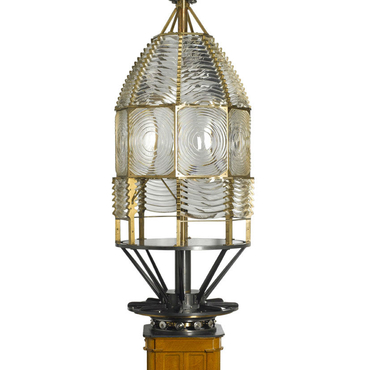
- Home
- Just another lighthouse ?
- The moderniation of Cordouan in the 19th century
- A new lens (1854)
At the time of Augustin Fresnel’s death in 1827, lighthouse lenses were rare and experimental. Although the installation of the large-scale apparatus at Cordouan proved the new technology's effectiveness, it would take a few more years to move from the prototype phase to a manufacturable product. The first lens at Cordouan was fitted with mirrors that were placed above and below the arrays of lenses. At that time, the craftsmen working for Fresnel were unable to produce large catadioptric prisms. Augustin's young brother Léonor (1790–1869) carried on with the process of innovation for nearly two decades. In the mid-1840s, large-scale catadioptric devices were installed in France and in a number of other countries with maritime boundaries, which purchased them from French firms. Cordouan's light had become obsolete, and in 1854 engineers proposed replacing it with a revolving lens, which meant that Teulère's metal lantern had to be enlarged. What was to be done with the historic 1823 lens? Originally, the French engineers considered shipping it to the shores of the Bosphorus, that they had offered to light prior to the outbreak of the Crimean War. However, the Ottomans preferred instead to purchase something new. The original lens was kept in Paris at the Lighthouse Museum, until it was transferred to the island of Ushant in the late 1980s.
